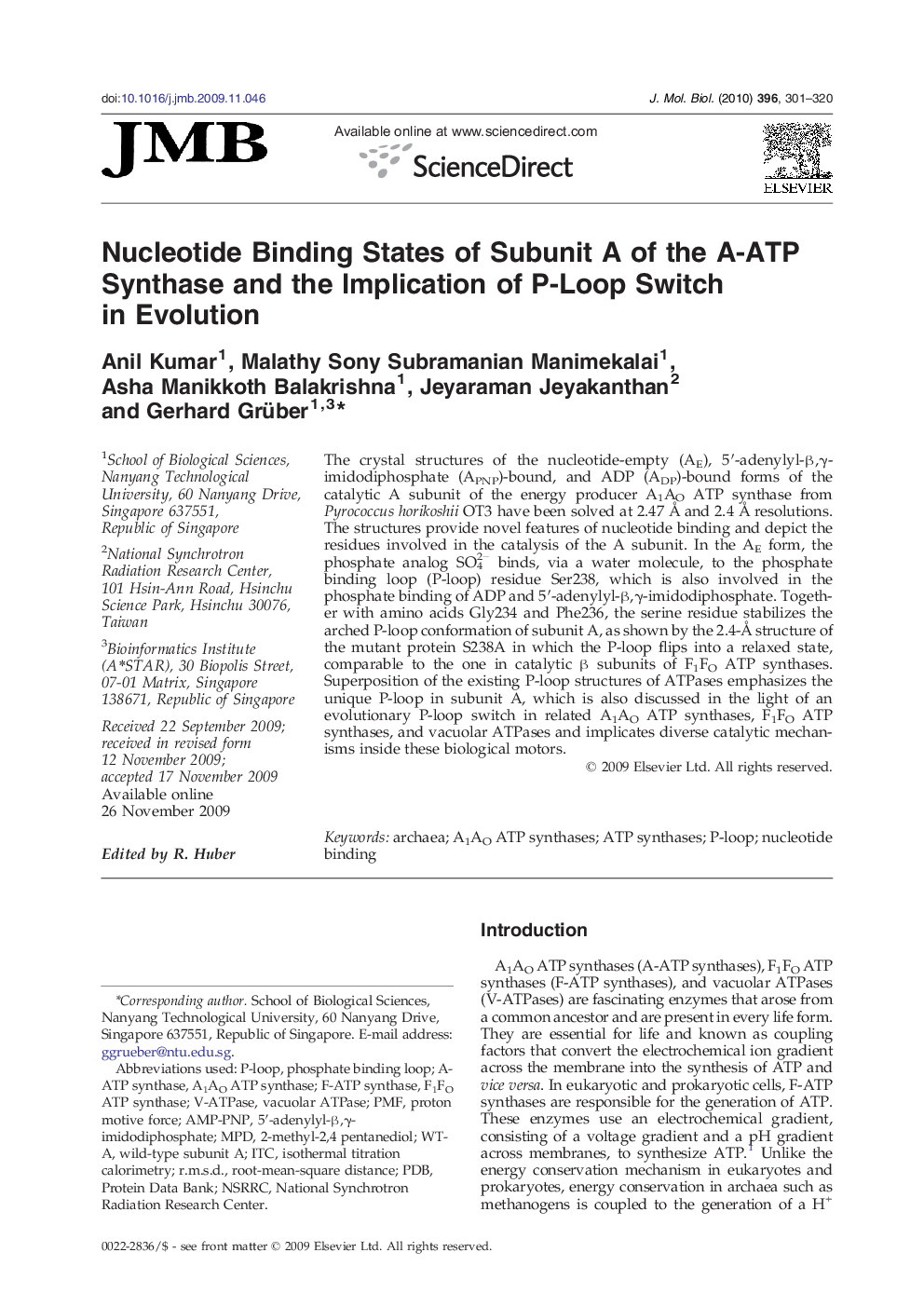| Article ID | Journal | Published Year | Pages | File Type |
|---|---|---|---|---|
| 2186040 | Journal of Molecular Biology | 2010 | 20 Pages |
The crystal structures of the nucleotide-empty (AE), 5′-adenylyl-β,γ-imidodiphosphate (APNP)-bound, and ADP (ADP)-bound forms of the catalytic A subunit of the energy producer A1AO ATP synthase from Pyrococcus horikoshii OT3 have been solved at 2.47 Å and 2.4 Å resolutions. The structures provide novel features of nucleotide binding and depict the residues involved in the catalysis of the A subunit. In the AE form, the phosphate analog SO42− binds, via a water molecule, to the phosphate binding loop (P-loop) residue Ser238, which is also involved in the phosphate binding of ADP and 5′-adenylyl-β,γ-imidodiphosphate. Together with amino acids Gly234 and Phe236, the serine residue stabilizes the arched P-loop conformation of subunit A, as shown by the 2.4-Å structure of the mutant protein S238A in which the P-loop flips into a relaxed state, comparable to the one in catalytic β subunits of F1FO ATP synthases. Superposition of the existing P-loop structures of ATPases emphasizes the unique P-loop in subunit A, which is also discussed in the light of an evolutionary P-loop switch in related A1AO ATP synthases, F1FO ATP synthases, and vacuolar ATPases and implicates diverse catalytic mechanisms inside these biological motors.
